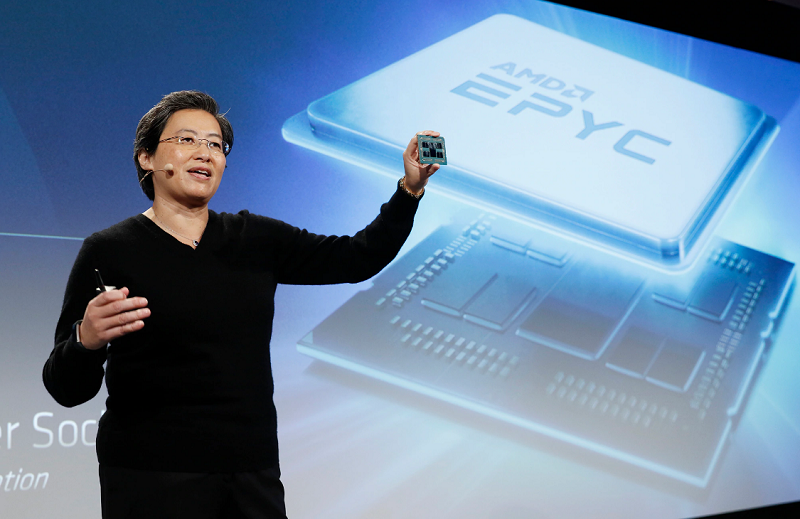AMD's AI Ascent: Open Source, Smart Strategy and Stable Leadership
Advanced Micro Devices (AMD) continues to impress, turning in another strong financial quarter that underscores its growing prowess, particularly in the white-hot Artificial Intelligence (AI) market. While often viewed as the challenger to NVIDIA’s dominance, AMD’s latest results and strategic positioning reveal a company executing brilliantly on multiple fronts, leveraging not just competitive hardware but also a crucial open-source advantage and steadfast leadership.

AMD's Financial Performance
The recent Q1 2025 earnings report, which saw AMD beat Wall Street expectations with $7.4 billion in revenue (up 36% year-over-year), confirms the momentum is real, largely fueled by its datacenter and AI endeavors.
Data Center Segment Growth
The star of AMD’s recent performance is undoubtedly its Data Center segment, which surged an impressive 57% year-over-year to $3.7 billion. This growth is powered by strong demand for both its EPYC server CPUs and, crucially, its Instinct AI accelerator GPUs, particularly the MI300 series.
While NVIDIA still commands the lion’s share of the AI accelerator market (estimated around 80%), AMD has successfully carved out a significant and rapidly growing position. Generating over $5 billion in Instinct GPU revenue in 2024 and showing continued strength in early 2025, AMD is proving its hardware is a viable, high-performance alternative.
Advantages of Open Source Strategy
Perhaps AMD’s most significant long-term competitive advantage lies in its software strategy, centered on its ROCm (Radeon Open Compute platform). Unlike NVIDIA’s powerful but proprietary CUDA ecosystem, ROCm is open source. This difference is becoming increasingly important.

AMD’s commitment to an open platform resonates strongly with the growing desire among enterprises and developers for flexibility, transparency, and avoiding vendor lock-in. ROCm allows developers greater control, supports multiple programming languages and AI frameworks, and fosters community-driven innovation.
Diversification and Strategic Acquisitions
AMD’s strategy extends beyond just CPUs and AI GPUs. The company maintains a strong semi-custom business, famously powering consoles like the PlayStation and Xbox, although this segment is currently experiencing a cyclical downturn.
More strategically, AMD has broadened its datacenter capabilities through key acquisitions. The acquisition of Xilinx brought powerful FPGA (Field-Programmable Gate Array) technology for adaptive computing into the fold, while the acquisition of Pensando added sophisticated DPUs (Data Processing Units) for intelligent networking.

Most recently, acquiring AI software specialist Nod.ai aims to accelerate the optimization and deployment of AI models specifically for AMD hardware, further strengthening its open AI software stack.
Stable Leadership
In the fast-moving, high-stakes semiconductor industry, stable and visionary leadership is invaluable. AMD benefits immensely from the long and highly successful tenures of CEO Dr. Lisa Su (who took the helm in 2014) and CTO Mark Papermaster. Its consistent focus on technology roadmaps, strategic bets (like chiplets), and disciplined execution has instilled confidence and delivered results.
Conclusion
AMD’s recent success is the result of a well-orchestrated, multi-faceted strategy. The company offers increasingly competitive hardware in critical growth markets like AI and data centers, effectively challenging established players. Its commitment to an open-source software ecosystem with ROCm provides a powerful, long-term differentiator in an industry wary of proprietary lock-in. Strategic diversification through custom silicon and shrewd acquisitions in software and networking further solidify its position.

Underpinning all this is the stable, visionary leadership of Lisa Su and her executive team, who continue to execute with remarkable consistency. While challenges like export controls remain, AMD has demonstrated resilience and strategic clarity, positioning itself impressively for continued growth. Congratulations are certainly due for AMD’s excellent work and strong momentum in the age of AI.



















